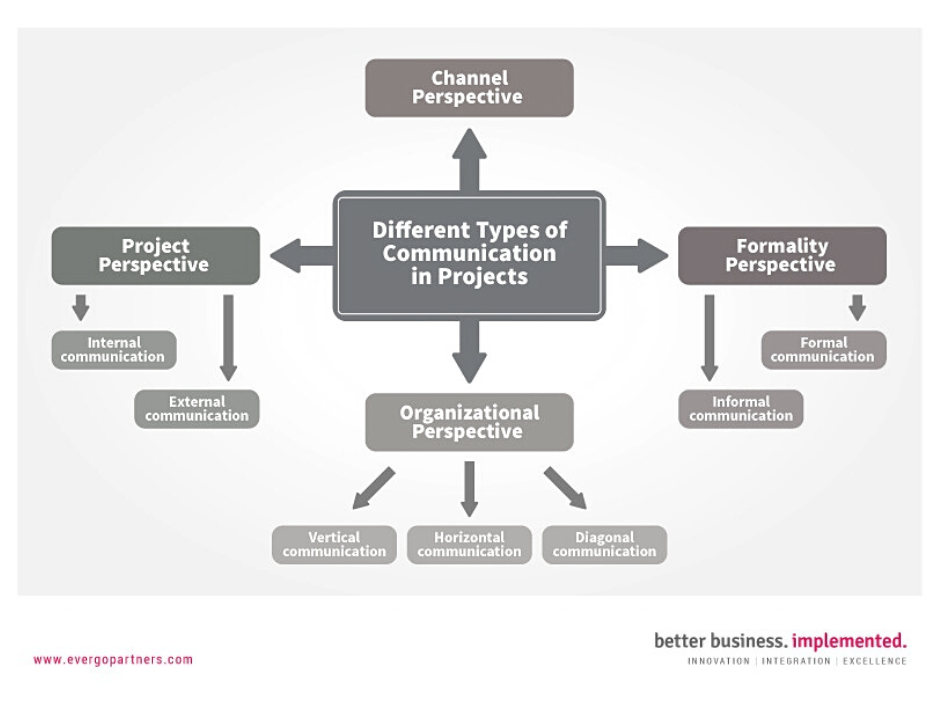Introduction
There are many different types of communication that a project manager will need to be familiar with if they want to successfully manage the project. Project communication has many different aspects that the project manager needs to be able to use. Let’s take a look at some of the different aspects of communication in a project environment.
Different Types of Communication in Projects
There are many perspectives to project communication. We’ll take a look at four types of communication aspects project managers will need to draw upon.

Project Perspective
From a project perspective, communication can be looked at as either internal or external.
Internal communication is the form of communication that takes place between project team members. Generally, this type of communication may involve a lot of back-and-forth discussion as plans or issues are worked out.
External communication is communication between project team members and other project stakeholders. It is communication within the project team (as internal) and customers, other projects, or the media (as external).
Organizational perspective
This perspective takes into account the way organizations are structured and may be vertical, horizontal or diagonal.
Vertical communication is the upward and downward communication flow that happens between different hierarchical levels of the organization. For example, a project team member providing the project manager with a status update of their tasks. An example of downward communication is when the project manager shares the project goals with the project team.
Horizontal communication refers to communication between people at the same organizational level. For example, project team members discuss project goals or tasks with one another.
Diagonal communication takes place between different functional departments of the whole organization. To be effective in these types of organizations, a project manager has to be familiar with the different functions and managers. It is also necessary to plan communication accordingly.
Formality Perspective
From formality perspective communication can be formal or informal.
Formal communication is usually planned and takes some time to prepare. This includes reports, presentations and media releases.
Informal communication does not need to be planned and usually starts by using social networking. This includes emails, phones and ad-hoc discussions.
An effective project manager understands that informal and formal communications are equally important.
Channel Perspective
Project managers also need to consider the communication channel they will use to deliver their message. In other words, how the message will be communicated; written or spoken, face-to-face or via telephone, verbal or non-verbal. Establishing the specific modes of communication to be used to convey messages aids in successful project management.
SUMMARY
Effective communication skills are the foundation of a project manager’s success. Understanding the different types of communication is important to ensure successful project communication. At Evergo Partners we know a lot about it.




